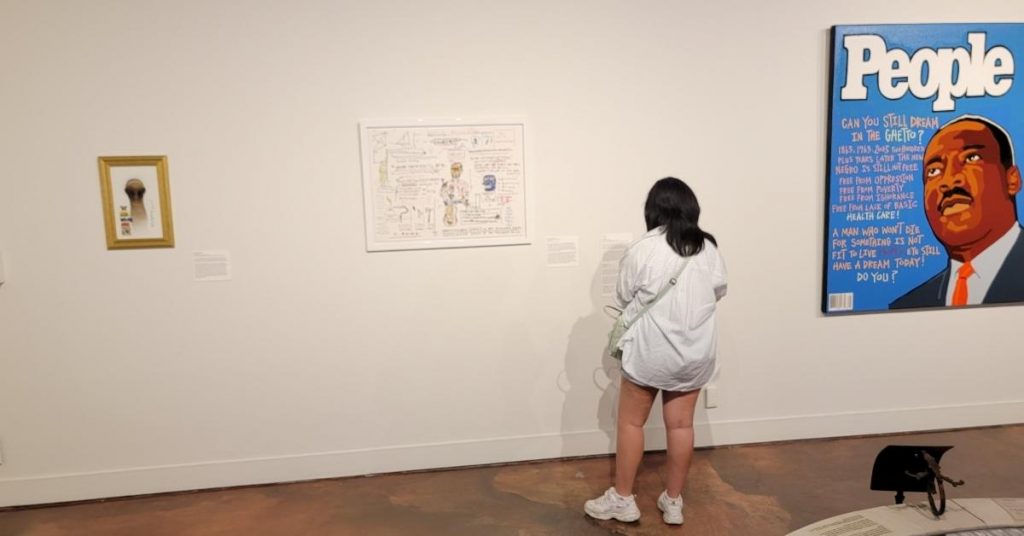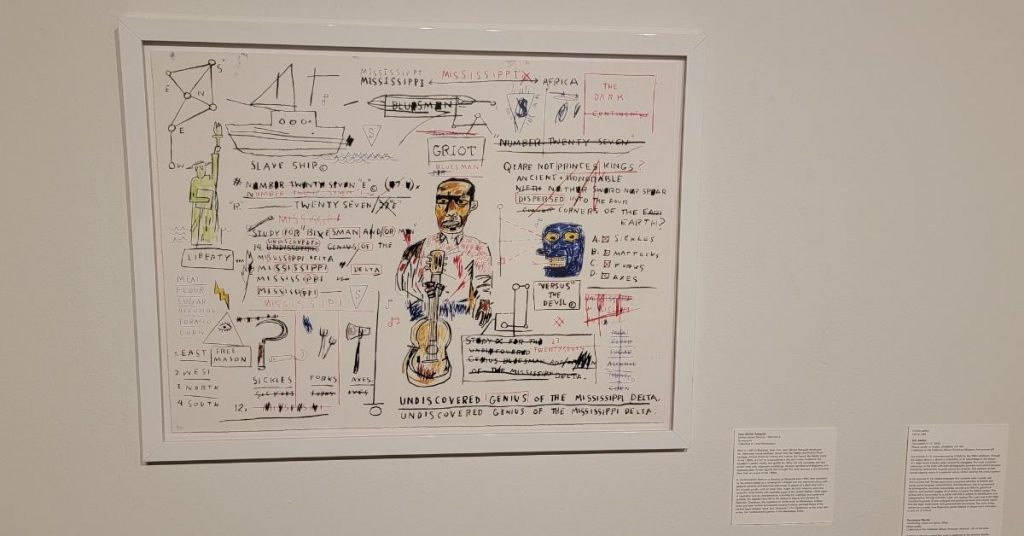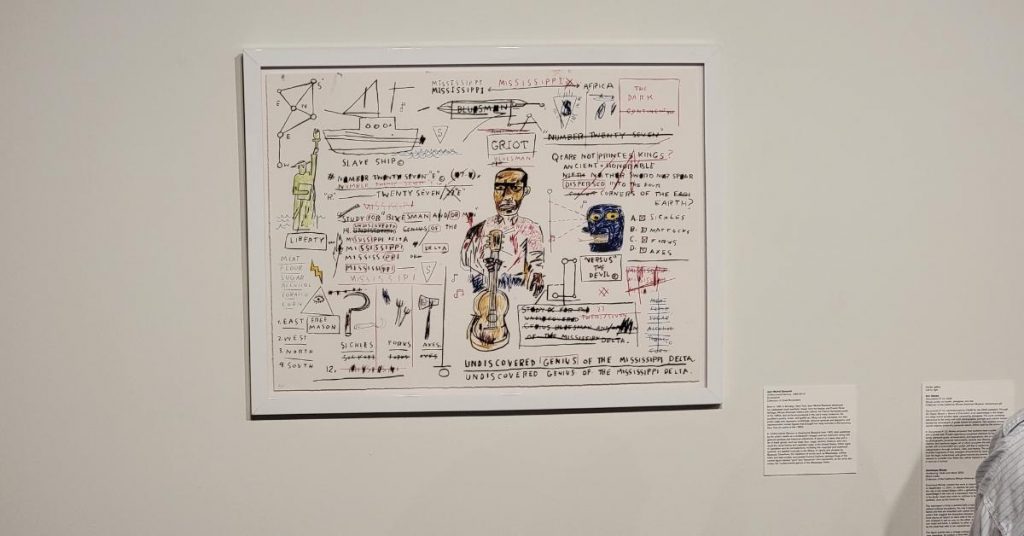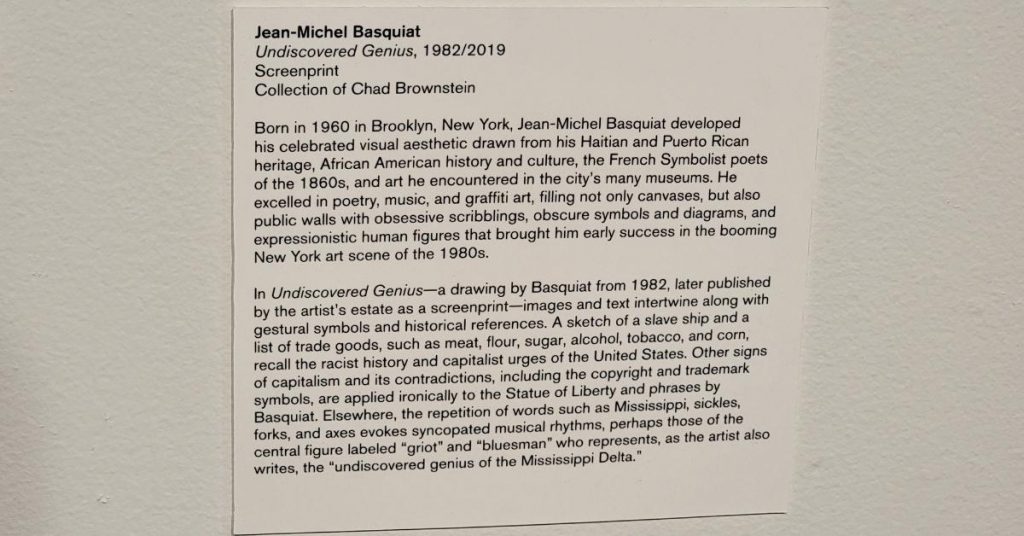
Born in 1960 in Brooklyn, New York, Jean-Michel Basquait developed his celebrated visual aesthetic drawn from his Haitian and Puerto Rican heritage, African American history and culture, the French Symbolist poets of the 1860s, and art he encountered in the city’s many museums. He excelled in poetry, music, and graffiti art, filling not only canvases, but also public walls with obsessive scribblings, obscure symbols and diagrams, and expressionistic human figures that brought him early success in the booming New York art scene of the 1980s.
In Undiscovered Genius – a drawing by Basquiat from 1982, later published by the artist’s estate as a screenprint – images and text intertwine along with gestural symbols and historical references. A sketch of a slave ship and a list of trade goods, such as meat, flour, sugar, alcohol, tobacco, and corn, recall the racist history and capitalist urges of the United States. Other signs of capitalism and its contradictions, including the copyright and trademark symbols, are applied ironically to the Statue of Liberty and phrases by Basquiat. Elsewhere, the repetition of words such as Mississippi, sickles, forks, and axes evokes syncopated musical rhythms, perhaps those of the central figure labeled “griot” and “bluesman” who represents, as the artist also writes, the “undiscovered genius of the Mississippi Delta.”




